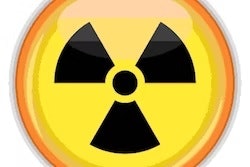Doctors have calculated radiation exposures for patients undergoing newer endoscopic fluoroscopy procedures and the results come with a warning, according to an article published September 17 in iGIE.
"Endoscopists must remain cognizant of the significant radiation exposure patients may experience, especially during complex therapeutic procedures," wrote lead authors Daniel Szvarca, MD, and Anmol Singh, both of Johns Hopkins Medicine in Baltimore, MD.
The quantity and complexity of diagnostic endoscopic procedures have increased significantly in recent years, the researchers explained. Fluoroscopy is integral to many of these procedures, such as novel interventional endoscopic ultrasonography (I-EUS), which is increasingly replacing surgical interventions, they added. However, the radiation exposure to patients during such novel endoscopy procedures needs to be better understood, they wrote.
To that end, the researchers retrospectively quantified radiation exposure (effective dose, or ED) and fluoroscopy time (FT) during I-EUS and three more common procedures and compared the findings.
The group reviewed records at Johns Hopkins Hospital from July 2019 to July 202 and included a total of 681 procedures: 539 endoscopic retrograde cholangiopancreatographies (ERCPs), 61 I-EUS procedures, 72 esophagogastroduodenoscopies (EGDs), and nine colonoscopies.
According to the findings, patients undergoing novel I-EUSs were exposed to significantly higher radiation than other endoscopy procedures, the authors wrote.
| Radiation dose (ED) and fluoroscopy time in endoscopic procedures | ||
|---|---|---|
| Measure | Radiation doses (millisieverts) | Fluoroscopy time (FT) |
| I-EUS | 4.3 mSv | 186 seconds |
| ERCP | 2.11 mSv | 121.8 seconds |
| EGD | 0.6 mSv | 42 seconds |
| Colonoscopy | 1.36 mSv | 90 seconds |
"Novel interventional endoscopic procedures have higher radiation exposure to the patient than conventional endoscopic procedures," the group wrote.
For context, the authors noted that the typical effective dose for patients for one abdominal CT scan is 10 mSv (1,000 mSv = 1 Sievert) and that studies on atomic bomb survivors estimate that with every Sievert of exposure, the lifetime risk of solid organ cancers increased by 6 to 15%.
"Using fluoroscopy during endoscopy procedures places patients and the endoscopy staff at risk of radiation-related adverse effects," the researchers wrote.
Additionally, for patients who require multiple procedures, this exposure must be tracked over time, as the potentially significant risks of radiation (malignancy) are cumulative, they wrote.
"In addition to optimizing the already available tools, future directions include refining the x-ray detector technologies, which aim to lower the radiation needed to generate good images, and performing more comprehensive, multicenter studies to confirm trends seen in this study," the researchers concluded.
The full article can be found here.



















